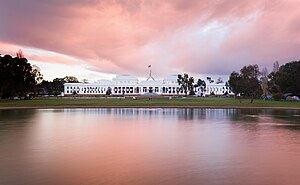 I was chatting to someone about once-in-a-century events, and I was reminded of a book I read a while back which pointed out that understanding probability is a pretty recent thing. In fact, there haven’t been that many centuries in which people could talk knowledgeably about 1-in-100 years events.
I was chatting to someone about once-in-a-century events, and I was reminded of a book I read a while back which pointed out that understanding probability is a pretty recent thing. In fact, there haven’t been that many centuries in which people could talk knowledgeably about 1-in-100 years events.
(I should probably put a disclaimer right here that, just as it seems any public post about poor grammar is bound to be riddled with grammatical errors, my post about probability is going to be full of mistakes. So, I promise to fix them, if they are pointed out to me.)
A funny thing about 1-in-100 year events, like 1-in-100 year floods, or storms, or market busts, is that they can appear to come along more frequently than once every hundred years. But it looks like we’re stuck with the name.
A 1-in-100 year event is simply one that has a 1% chance of happening in any particular year, which means that, mathematically, you would “expect” there to be one, on average, every hundred years. But of course, some centuries will have more or less of them.
In fact, (making assumptions about the distribution of events,) you would expect 37% of centuries to never have a particular 1-in-100 year event. You also get exactly one 1-in-100 year event in around 37% of centuries. The rest (26%) have more than one.
While more than a quarter of centuries can see multiple occurrences of a 1-in-100 year event, it’s worth asking: how many times can such an event crop up in a century before you start to wonder if it’s really still a 1-in-100 year event. How many occurrences of 1-in-100 year events should you actually expect?
The answer depends on the threshold for unlikeliness. A reasonable standard might be that anything less than 5% probable is pretty improbable. Back in high-school, playing D&D role-playing games, throwing a 20 sided die and getting a 20 (i.e. a 5% chance) was enough to get you special results. It came up a few times every game, but it was something pretty unlikely indeed. So, let’s use that standard for now. (It’s also common elsewhere.)
So, how many occurrences of a 1-in-100 year event in a single century are needed before we get to a level that’s less than 5% likely (or, you would expect to occur in less than one century out of twenty)?
The answer is 4. It’s only when you get four of a 1-in-100 year event happening in the same century that you might want to start questioning whether something else is going on, because it’s all starting to get a bit improbable. Four or more of such an event should crop up in less than 2% of centuries.
So, in summary, you shouldn’t be shocked to see three of a 1-in-100 year event occur in the last hundred years – it’s perfectly expectable.

![Reblog this post [with Zemanta]](http://img.zemanta.com/reblog_e.png?x-id=09ea4120-47f0-4929-b249-353562af7eb4)
